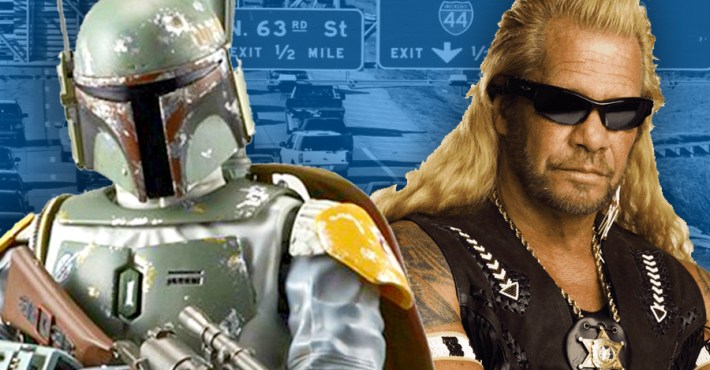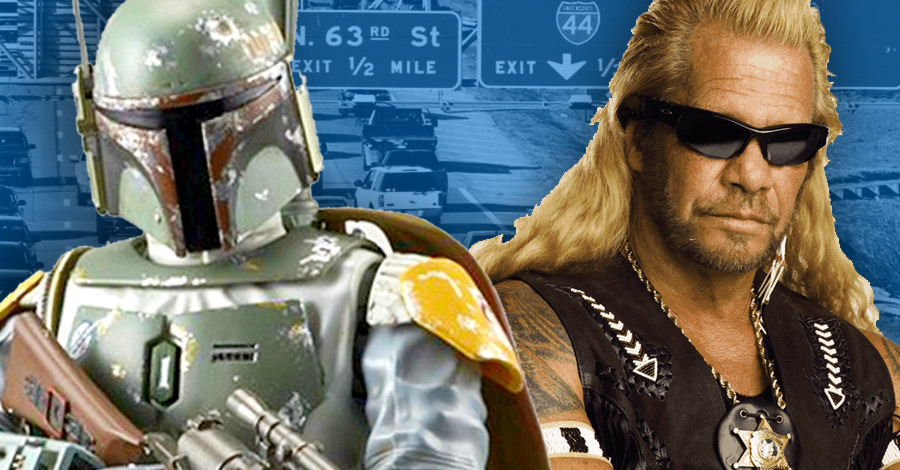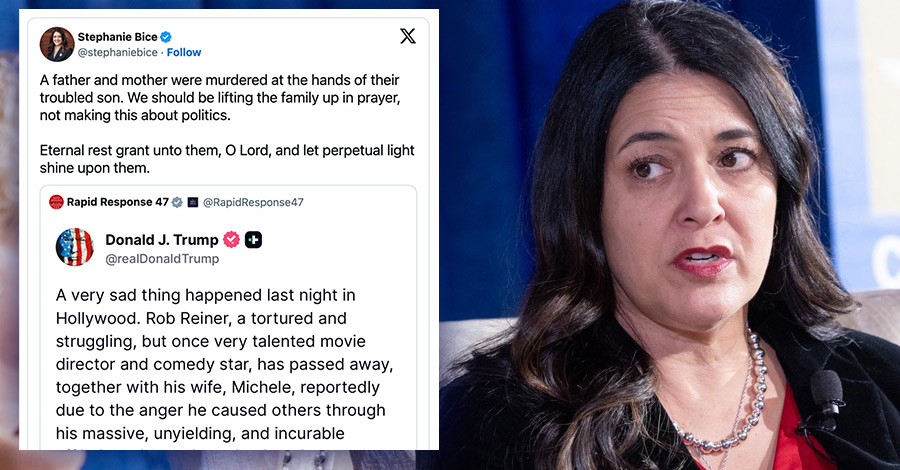
Back in November, Oklahoma implemented a new license plate scanning system to help crack down on the state's uninsured motorist problem.
On the surface, it seems like a good idea. It's estimated that 25% of Oklahoma motorists don't have basic liability insurance, so anything we can do to combat that problem – other than providing an adequate public transportation system or making our society less dependent on automobiles – the better.
Or maybe not.
According to this KFOR report, motorists who have car insurance are being flagged and receiving tickets in the mail. That's probably not a good thing.
In addition to that, Oklahoma politicians dumped enforcement of the new law on the private sector, giving for-profit companies lucrative financial incentives to aggressively ticket and fine Oklahomans who already can't afford to pay for basic expenses like, uhm, car insurance.
According to the World, the program has also given rise to a new profession – Car Insurance Bounty Hunters!
Via The Tulsa World:
Insurance bounty hunters are looking for uninsured vehicles on the streets of Oklahoma
If your car doesn’t have liability insurance, watch out.
A state contractor is roaming the streets of Oklahoma looking for uninsured vehicles and setting in motion a process that can lead to some hefty fines for those who aren’t following the state’s mandatory liability insurance law.
I'm a anti-authoritarian type when it comes to law enforcement, but even I'll admit that having car insurance bounty hunters roaming the streets seems kind of cool. Well, that is if they dress up as lizards, cavemen and generals, and attempt to freeze uninsured motorists in carbonite.
Four vehicle-mounted camera units are working the beat statewide and soon will be concentrating on the high-traffic areas of Tulsa and Oklahoma City. Pole-mounted cameras are also in the works. The units take pictures of license tags and compare the plates to the state’s insured vehicle database. No insurance? You’re flagged.
After the state double checks reported uninsured vehicles, $174 violation notices are sent. The contractor gets $80 of that amount.
Some 2,100 initial violations were gathered in the program’s first few weeks. Do the math. That’s quite a payday.
Unlike the Tulsa World, we can actually afford a calculator at the The Lost Ogle. The payday is $168,000. That's a decent chunk of change for a couple of months of work driving around scanning license plates, but it doesn't account for the cost of doing business. For example, working with our sheriffs and DAs to aggressively pursue payment and extort poor Oklahomans who already can't afford car insurance has to take some time and money.
Here's more:
Arguably, the system uses the power of free enterprise to deal with a real public problem — drivers who refuse to follow the law. When uninsured drivers have traffic accidents, innocent victims get stuck with big medical and repair bills. That’s wrong, and it happens far too often.
At the same time, we understand those who have a philosophical problem with outsourcing the state’s law enforcement power. Like private prisons, there’s a basic problem with the state allowing people to use its law enforcement power for profit. The people trust the government with that power because the government is answerable to the people. Should it be sold to the high bidder?
If the result of the program is more people in jail because they can’t afford to pay privately generated traffic violations, then there are even greater concerns.
The perfect solution would be for every driver to be conscientious and insure their vehicle. Most drivers do. But we don’t live in a perfect world and too many do not.
The state refuses to fund public safety properly, and we end up with law enforcement that isn’t able to enforce laws. Thus: Insurance bounty hunters roam the streets looking for $80 payoffs.
Actually, I'd say the perfect solution is to make it possible for people to live and get by without car. But as the Tulsa World noted, we don't live in a perfect word. Although with cool car insurance bounty hunters blending in with trash and debris and shooting lasers at cars, we might get there.







